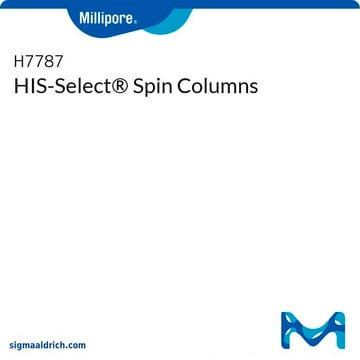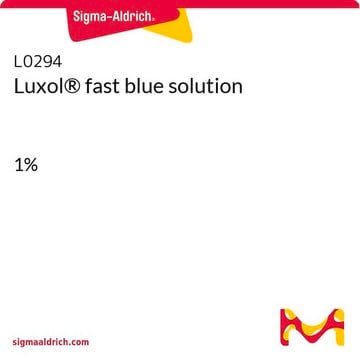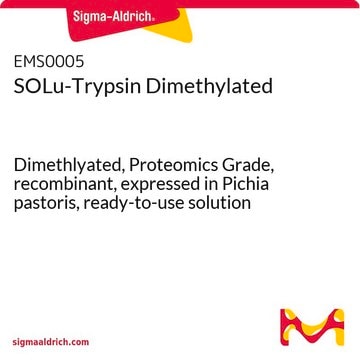TT0010
Trypsin-Spinsäulen
for proteomics
Synonym(e):
Immobilized TPCK- treated Trypsin, Immobilized Trypsin
About This Item
Empfohlene Produkte
Qualität
for proteomics
Lagertemp.
2-8°C
Suchen Sie nach ähnlichen Produkten? Aufrufen Leitfaden zum Produktvergleich
Verwandte Kategorien
Allgemeine Beschreibung
This ultra-micro spin column contains highly purified, TPCK-treated porcine trypsin immobilized on a spherical 20 micron silica support, chemically modified to minimize non-specific adsorption. Eluted peptides are ready for MS analysis, and require no additional clean-up. Ideal for rapid protein digestion of small volumes (100 μl or less), the Trypsin Spin Column is a New Spin on MS Sample Prep!
Leistungsmerkmale und Vorteile
- 15 Minuten Verdau
- Ideal für 10 bis 100 μg Proteinproben
- Minimale chymotryptische Aktivität
- Keine zusätzliche Aufreinigung erforderlich
Ähnliches Produkt
Signalwort
Warning
H-Sätze
Gefahreneinstufungen
Acute Tox. 4 Oral
Lagerklassenschlüssel
10 - Combustible liquids
Flammpunkt (°F)
Not applicable
Flammpunkt (°C)
Not applicable
Analysenzertifikate (COA)
Suchen Sie nach Analysenzertifikate (COA), indem Sie die Lot-/Chargennummer des Produkts eingeben. Lot- und Chargennummern sind auf dem Produktetikett hinter den Wörtern ‘Lot’ oder ‘Batch’ (Lot oder Charge) zu finden.
Besitzen Sie dieses Produkt bereits?
In der Dokumentenbibliothek finden Sie die Dokumentation zu den Produkten, die Sie kürzlich erworben haben.
Kunden haben sich ebenfalls angesehen
Unser Team von Wissenschaftlern verfügt über Erfahrung in allen Forschungsbereichen einschließlich Life Science, Materialwissenschaften, chemischer Synthese, Chromatographie, Analytik und vielen mehr..
Setzen Sie sich mit dem technischen Dienst in Verbindung.














